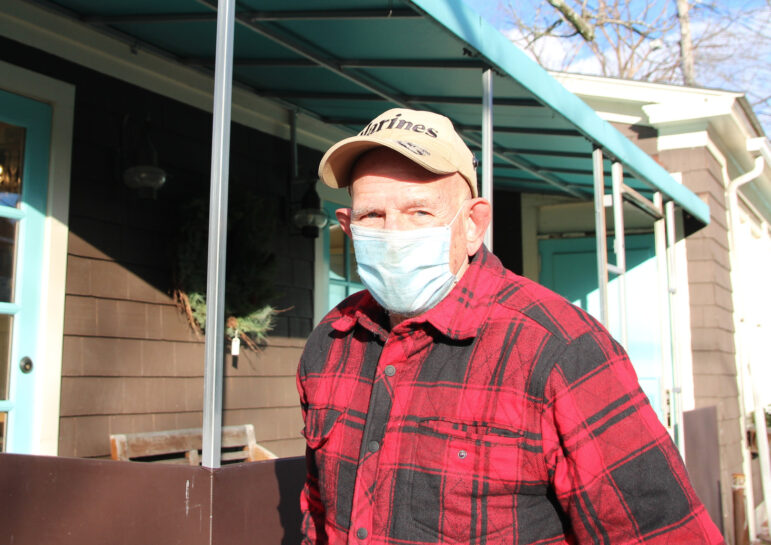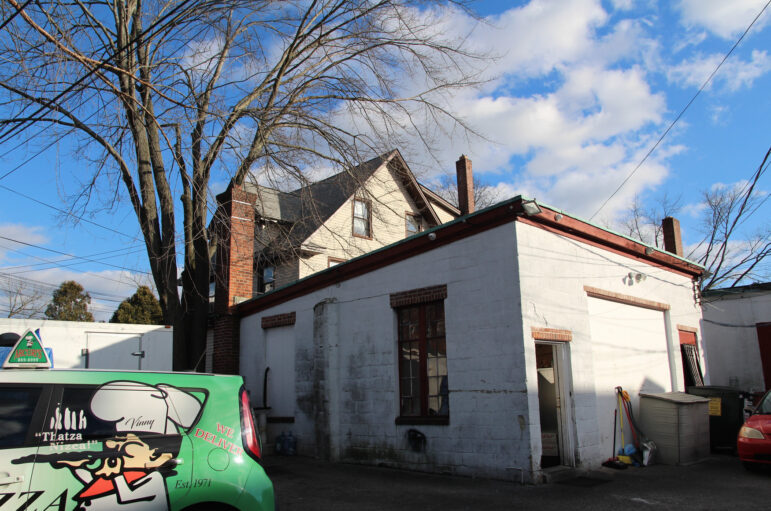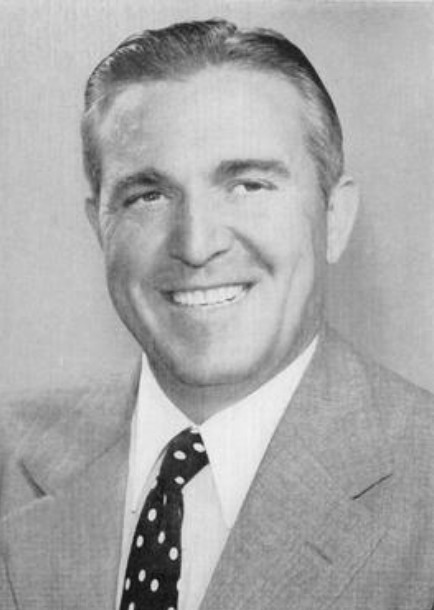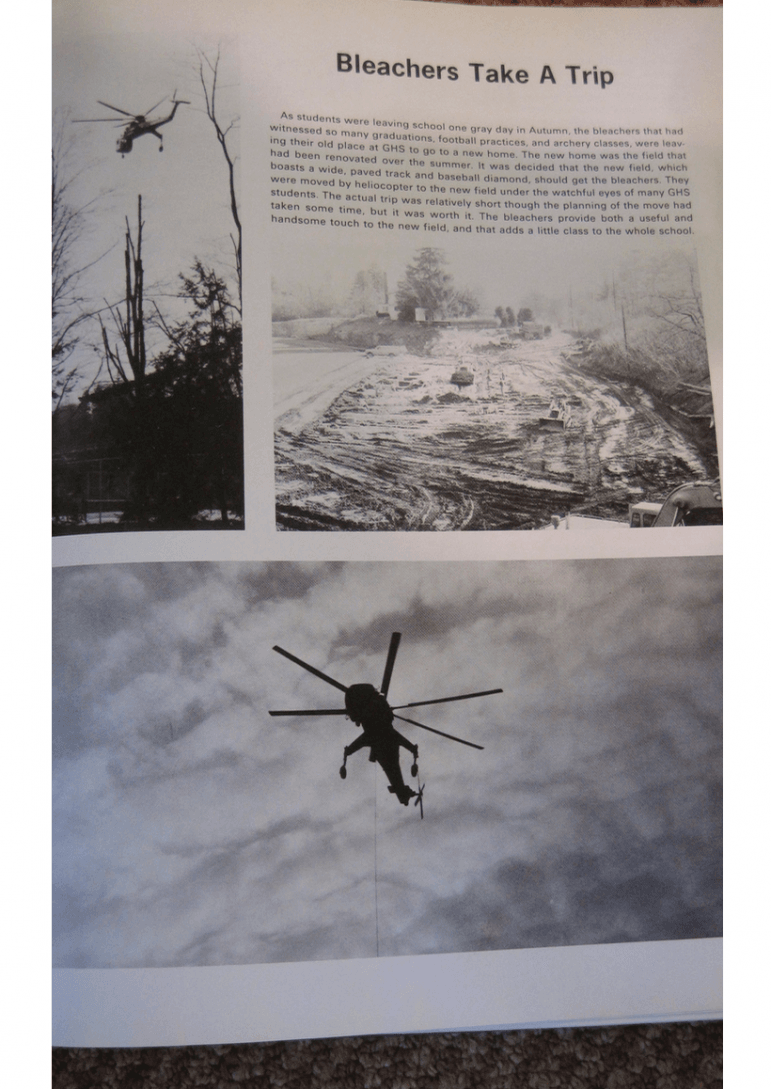The Drawing Room Cos Cob
Martin "Marty" Rossi is looking forward to 2021.
"My New Year's resolution is to enjoy life twice as much as last year," he said on a chilly December afternoon in Cos Cob's Hub where he has lived all of his 82 years.

Mr. Rossi, who worked for many years for for Southern New England Telephone Company, traces the history of the vibrant Hub through several decades.
In the row of storefronts that include Arcuri's, Cos Cob Stationary, Randy's Wines and Gelato & Cioccolato, he said there was once a barber shop where he got his first haircut. There was also a tailor, a small grocery store and Peel's Hardware.

He noted that the front of Peel's, now home to the Drawing Room design shop, originally aligned with the other storefronts, but is now angled across the front.
"They did a survey and found out it was on state property, so they had to cut back front of the store," he said.
Behind Arcuri's, Rossi pointed to the spot where there had been a cottage where a man named Harold Powers and his sons Richie and Freddie lived.
Rossi said the building where the Drawing Room cafe is today was Mr. Powers' machine shop, where during World War II, they operated 24/7 with 12 men in two shifts doing contracting work for the war effort.
"Powers did a lot of work for Sikorsky, and in about 1945 or 46, they were awarded an Army/Navy 'E' for Efficiency," he said.
"American Cyanamid and Pitney Bowes did too, but Powers' machine shop was the smallest business to win an Army-Navy 'E' for efficiency, and they had a big party and barbecue to celebrate it," he said pointing to the area between the Cos Cob Fire Station and the library. "The Secretary of the Navy came to present the flag. There were 200 people over there. I must have eaten five hamburgers and six hot dogs and five sodas."
A Memorable Night: Friday, February 13, 1953
Beyond the brook along the Drawing Room café, where there is a municipal parking lot today, Rossi said there had been swamp with tall weeds that was the scene of a memorable night.
"I was in sixth grade at Cos Cob School, and it was about 9:30pm," he said pointing up to two windows in the house behind Randy's Wines.

"That's where I've lived all my life. That night I was getting ready to go to bed – my mom and sister were already in bed – when I hear all this commotion and hollering going on."
"Up the Merritt Parkway a cop had stopped a stolen car," Rossi recalled. "He called it in, and then went to ask the driver for his registration. The guy in the car shot the cop and killed him."
Rossi said the suspect was driving a black Mercury, information the trooper had already called in before he was shot.
According to the Town of Trumbull website, 20-year old John Donahue, a parolee who had been recently incarcerated near Boston, was driving a car stolen out of Massachusetts when Connecticut State Police Trooper Ernest Morse pulled him over for speeding.
"Greenwich Police Officers McGinty and Wag were by Diamond Hill when they spotted the black Mercury stopped at a light," Rossi said. "He took off and they chased him."
"They came down the Post Road, the guy came right across the lawn of Cos Cob School and smashed into a tree by the edge of the school," Rossi said, recalling what he witnessed through his bedroom window. "He got out, ran down the hill, and now the police car is right behind him. They pulled out their guns and started firing. The guy ran through the brook and into the swamp and the tall weeds."
Rossi said next to the machine shop by Suburban Ave, was a garage where Donald Peel, who lived above his hardware store, stored his 1947 Mercury. The suspect wound up in the garage.
"There's police cars, cops all over this place looking for this guy," Rossi continued. "Don Peel's car had been in the garage quite a while, and on the trunk, in the dust were hand prints and footprints. The guy had gone up the back of the car, onto the roof and up into the attic. When the police saw the prints on the car, they said, 'Come on down while you got the chance.'"
"I watched the whole thing from my bedroom window. When he came down, they gave him a going over," Rossi said. "He went to court for murdering that cop. He might have been one of the last guys in Connecticut to die in the electric chair."
John B. Donahue was convicted of First Degree Murder and was sentenced to death. He was executed by electrocution on July 18, 1955 for the murder of Trooper Ernest Morse.
The last person executed by electrocution was Joseph "Mad Dog" Taborsky in May 1960.
Wooden Bleachers at Greenwich High School at Field Point Rd Replaced in 1956
Rossi attended GHS n the 1950s when it was still on Field Point Rd. He recalled that the football field had wooden bleachers.
"All the guys on the football team with me – GHS 1955, 1956, 1957 – they can recall the old wooden bleachers. And, all of a sudden, for graduation, we got new aluminum bleachers."

Rossi said the new bleachers were thanks to the efforts of Albert P. Morano, US Congressman representing Connecticut's 4th district from 1951-1959.
Rossi said he played football and baseball on Havemeyer Field in the 1950s.
"At that time, for football season, they had the set of wooden bleachers, and a second set of wooden bleachers on the visitor side," he recalled. "At the end of the football season they used to have to take the bleachers down because they were on the track and in the way. They were the raggediest bleachers!"
Eventually, he said, "You couldn't sit on them, they were cracked broken and full of splinters."
As Rossi tells the story, there was a parade in front of the White House for Dwight Eisenhower's inauguration after his landslide re-election victory in 1956, and aluminum bleachers were set up along the parade route on Pennsylvania Ave.
"Al Moreno put the 'P' in politician, and he served a number of terms," Rossi said. "After the ceremony, he asked what were the plans for the bleachers, saying Greenwich could use them at Havemeyer field."
"A lot of people owed him favors," Rossi explained. "In 1956 I stood on those bleachers for my graduation…They never cost the town a penny."
"Like I said, Al knew a lot of people in Washington," Rossi continued. "He had one of the worst attendance records in Congress – worse than Adam Clayton Powell – but if you wanted something done, you got a hold of Al Morano and he got it done."
Ten Acre Swamp and the Journey of the Bleachers
On the topic of Greenwich High School, Rossi said after he graduated, he entered the Marine Corps, and when he returned to Greenwich the new GHS campus on Hillside was under construction.
"The football field isn't where it is today. That whole area (the original football field was on the west side of campus) was used for ice skating, and they used to cut ice in there," he recalled. "It took almost an entire summer to fill it in – I knew folks who drove trucks for Peter Mitchell – he was a contractor with a big, big operation. And they were trucking fill in there every day, all summer long. As fast as they could dump it, it sunk because the swamp had no bottom in it."
Indeed, Rossi's memories dovetail with others, including Robert Holbeck, who was interviewed for Greenwich Library's oral history project in 1976 at the age of 55.
Weighing in on the then new high school, Holbeck said, "I skated there. That was Ten Acres… There's no firm foundation there, you see. Mother Nature. You don't fool with Mother Nature."
Mr. Rossi said the lore was that the swamp fought back.
"They said you could dump boulders in there the size of a piano and the next day it would be gone," he said. "After all summer long, hauling, hauling, hauling, they filled in the swamp which was going to become the athletic field."
"The fill came from the incinerator where they used to they used to burn garbage. They went through Chickahominy at night with all the ashes," he continued. "'We have hundreds of yards of fill – ashes from the incinerator. What are we going to do with them?' They used them to fill in the swamp. It was all marshland. It's impossible to fill in marshland."
Rossi said half of GHS was built on a swamp and the other half was rock ledge, and when the town took apart the aluminum bleachers and trucked them over to the new campus at Hillside Rd, which opened in 1970, they placed them in a swampy area.
"Things were still settling, and there was a slope," he recalled, adding that only a few seasons of football were played there. "The guys used to flip a coin at the beginning of the game, and the winner had a choice of uphill or downhill. They'd always take the goal on the high side."

Eventually, the town decided to move the bleachers from the back of the high school to the current football field. Rather than disassemble them for such a short move, they opted organized a Sikorsky helicopter to handle the task.
"They came down on a Sunday morning, picked up the bleachers and flew them up to the current football field," Rossi said.
Armed Forces Show at GHS
Another vivid memory of Rossi's was the annual Armed Forces show that was moved from Havemeyer to the GHS campus on Hillside Rd.
"US Tobacco used to be a big sponsor of the show, and they used to invite the Navy Seals and the Marine Corps band," Rossi said. "Anyway, the Marines were coming up for the demonstration, and they brought Apache helicopters – and boy did they put on a big fire power demonstration on the field. Afterward the kids got to meet the GIs and crawl over the jeeps."
Rossi said he recalled an incident after one of the shows. He said at the time was with Jimmy Loughran, who also grew up in Greenwich, became a Marine Corps officer, then a teacher, and eventually became the Superintendent of Darien Schools.
"We're there and we're standing next to one of the helicopters and talking to a Marine Captain. He was from Alabama or Mississippi, and he looked like right off a poster – a handsome guy," Rossi recalled. "He was in command of the 4 helicopters that flew up from Marine Corps Base Camp Lejeune, and he said some of the helicopters had been in Vietnam and were older than the guys flying them."
Rossi said the captain told him and Loughran that he always looked forward to coming to Greenwich for the show because they'd be put up in the Hyatt Hotel and have dinner at the Belle Haven Club.
"He told us, 'Otherwise we'd sleep in the helicopters,'" Rossi said.
"So, anyway, here comes this lady after the show. She's one of the people who lived up on the hill (behind GHS) and she's steaming. She says to this Marine Captain, 'Are you in charge?' and he said, 'Yes, what I do for you?'"
"Then she said, "I hope when you leave you never come back again because last night my poor little dog got so upset he pissed all over the rug,'" Rossi said, adding that he never forgot the Marine Captain's reply. "He said, 'Lady where I come from, that sound means freedom.'"
Rosse said he remembered the Marine Captain mentioned he had orders to report to Camp Pendleton before heading to Okenawa.
"I remember I said, 'You put on a great show and I hope you come back next year,'" Rossi said. "A month later, the New York papers reported that a Marine helicopter crashed in Camp Pendeleton and 12 Marines got killed and he was one of them."
Memories of Mill Pond: Spearing Eels, Crabbing, Skating
Rossi recalled when he was a boy, Mill Pond was undeveloped. "That was a big old swamp. I used to walk up there in mud up to my knees and go crabbing," he recalled. "They filled that whole thing in and graded it and built the shopping center there."
"At that time everybody knew everybody in town….With the Mill Pond at that time, there was 3-4 feet of water. That's where we skated."
Rossi recalled how people would cut the holes in the ice to spear eels.
"And they ruined our skating," he said. "And the place in the summer was full of crabs! I haven't seen a crab in Cos Cob harbor in 30 years. When they built the turnpike in 1955-57, they upset the whole balance of the river. Crabs and eels used to breed there. Everything changed."
Cos Cob Power Plant
Rossi recalled how the Cos Cob Power Plant used belch soot.
"That soot made mill pond filthy," he said. "Oh boy, when they'd light that thing up at night, the cinders and the smoke! Mill Pond filled up with sediment."
Rossi said Mill Pond had been a great place to go ice skating.
"But they'd blow the stacks when it got dark, and the next morning we'd show up and the ice was colored with soot," he recalled. "Our clothes would be filthy after we played hockey. I bet there's two feet of soot in there. It'll never get dredged because there's no place to truck it to, and it's all contaminated."
"I knew an electrician who worked 25 years at the plant," Rossi continued. "He was on the job when they took down the stacks. He said that of all the places he had worked, that was the filthiest place in Fairfield County."
The Lure of the Drawbridge over Mianus River
Rossi said that as a boy he and his friends used to swim from their favorite swimming hole across from the Bush-Holley House out to the drawbridge in warm weather.
"We used to jump off the drawbridge about 60-70 feet. We'd climb all through the girders – pigeons had nests in there. It's a wonder nobody ever got killed," he recalled.
Rossi shared the story of one cold winter when he was about 9, and the Mianus River was frozen.
Along with three or four friends Rossi said he walked on the ice all the way from the Post Road down the Mianus River to the drawbridge.
"We walked all the way down. We were going to walk to the Riverside Yacht club, but under the drawbridge in the channel, I fell through the ice," he recalled.
Rossi recalled the experience as terrifying.
"I was lucky I was able to get to the edge of the ice and pull myself up, and they pulled me back onto the ice. Boy, was I lucky. My clothes were frozen before I got to shore.
Quonset Huts: Housing GIs after World War II
Rossi said the Loughlin Ave playing field was built on another swamp.
"It was filled in in 1945-46, and there was about eight Quonset huts where the tennis courts and baseball fields are," he recalled. "When the GIs came home from the second world war, they needed housing. They also put Quonset huts up at Bible Street park where the bocce courts are now."
Later he said bungalows were built for veterans in the area of Cary Road.
"The bungalows at the bottom of Riverside hill were also for veterans coming home from World War 2, and the guys in the Quonset huts got to move up to those! That was like moving up North Street."
Also, he said, after the war, there were three or four GIs and their families housed in that mansion at Tod's Point for four or five years.

Mianus Bridge Collapse in 1983
Rossi said he has vivid memories of the Mianus bridge collapse on I-95 on June 28, 1983.
A 100 foot span span of the bridge collapsed at about 1:30am, hurling six people into the river 75 feet below, killing three and critically injuring three others, though many people have noted it would have been worse if the collapse had been at rush hour.
For longtime Greenwich residents, the moment they learned of the collapse never fades.
Rossi said his first memory was being shocked by the traffic on Putnam Ave the morning after the collapse.
"The Post Road was trailer trucks and cars, bumper to bumper. I said, 'What the hell is going on here?' and someone said that the bridge fell down," he recalled. "I took a ride down River Road to the Bush-Holley house and, by God, the bridge fell down."
"It was bumper to bumper all night long before they built a temporary ramp off the turnpike," he said. "That went on for two years."
Rossi recalled meeting iron workers who had come up from the south to work on the new bridge. It was a two year project and they rented a house in Mianus.
He said they had already been in Greenwich for a year when he chatted with them at the St Lawrence Club, where they'd come in for a beer.
Rossi recalled how one of the iron workers remarked how it could have been worse.
"He said he had worked on bridges all over the US. 'You know, just one section of the bridge came down. It's a wonder the whole bridge didn't come down. This is one of the worst ones I've ever worked in. The bridge is over 50 years old and there was no maintenance done. It was an accident waiting to happen.'"
Rossi said he used to spend time down at the boat yard in Cos Cob polishing his car under the Mianus bridge before it collapsed.
"I'm down there wiping my car off. A lot of people walk their dogs there, and a woman says what's that noise. I said, 'That's the expansion joint for the bridge over our head. She said, "What's wrong with it?'"
"I said there's pieces of it laying on the ground….Clickity clack. Clickity clack. They won't do anything until the bridge falls down. You don't call the highway department to get anything done. You gotta deal with the right people," he said.
Taking the story back to the start of the interview, he added, "If the Town of Greenwich ever asked for those bleachers, they'd still be waiting. It's about talking to the right person to get things done."
See also:
Anniversary of Grim Event: Collapse of Mianus River Bridge, June 28, 1983
The Drawing Room Cos Cob
Source: https://greenwichfreepress.com/around-town/marty-rossi-shares-82-years-of-memories-in-cos-cobs-hub-152071/
Posted by: vanalstynerefustoo.blogspot.com

0 Response to "The Drawing Room Cos Cob"
Post a Comment